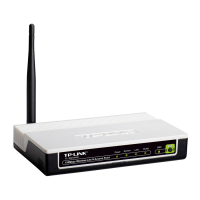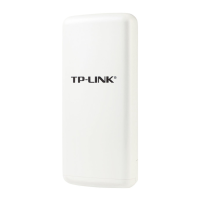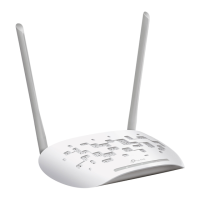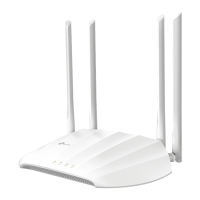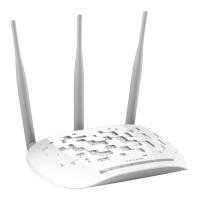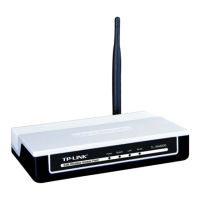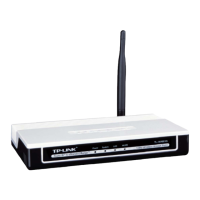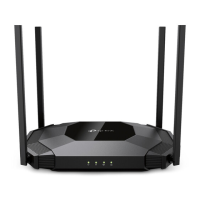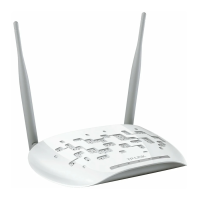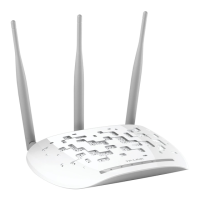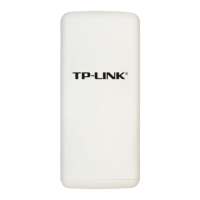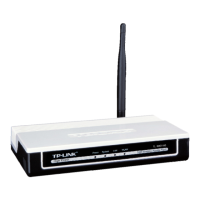Do you have a question about the TP-Link TL-WA7510N and is the answer not in the manual?
Overview of the TL-WA7510N's purpose and features for outdoor wireless networking.
Lists the key technical specifications and functionalities of the device.
Describes the physical ports and indicators on the device's front and rear panels.
Outlines hardware and software requirements for device setup and operation.
Guides physical connection for Standard AP, AP Router, and AP Client Router modes.
Steps to configure PC network settings for communication with the AP.
Guides users through initial setup of basic network parameters and operation modes.
Accessing the management interface and viewing the device's current status.
Using the quick setup wizard and QSS for initial configuration and device pairing.
Configuring the device's operating mode and network parameters (LAN/WAN).
Setting up wireless parameters including SSID, security, MAC filtering, and advanced features.
Accessing the management interface and viewing the device's current status.
Using the quick setup wizard and QSS for initial configuration and device pairing.
Configuring the device's operating mode and network parameters (LAN/WAN/MAC Clone).
Setting up wireless parameters including SSID, security, MAC filtering, and advanced features.
Configures the device as a DHCP server, including IP address pool and lease time.
Displays connected clients and allows reserving specific IP addresses based on MAC.
Configures port forwarding for services and applications requiring dynamic port mapping.
Exposes a local host or enables UPnP for automatic device discovery.
Configures firewall, VPN passthrough, ALG, DoS protection, and flood filtering.
Controls local management access via MAC address and configures remote access.
Sets rules to restrict Internet access for specific PCs based on MAC address and schedule.
Manages access policies for hosts, targets, and schedules to control Internet usage.
Defines predefined paths for network traffic to reach specific hosts or networks.
Configures upload (Egress) and download (Ingress) bandwidth limits for network traffic.
Establishes a link between IP and MAC addresses to prevent IP spoofing.
Configures DDNS services to map a dynamic IP address to a fixed domain name.
Configures device time and uses diagnostic tools for network testing.
Manages firmware upgrades, factory defaults, and configuration backup/restore.
Restarts the device, manages passwords, and views system logs.
Displays network traffic statistics for connected devices.
Overview of the TL-WA7510N's purpose and features for outdoor wireless networking.
Lists the key technical specifications and functionalities of the device.
Describes the physical ports and indicators on the device's front and rear panels.
Outlines hardware and software requirements for device setup and operation.
Guides physical connection for Standard AP, AP Router, and AP Client Router modes.
Steps to configure PC network settings for communication with the AP.
Guides users through initial setup of basic network parameters and operation modes.
Accessing the management interface and viewing the device's current status.
Using the quick setup wizard and QSS for initial configuration and device pairing.
Configuring the device's operating mode and network parameters (LAN/WAN).
Setting up wireless parameters including SSID, security, MAC filtering, and advanced features.
Accessing the management interface and viewing the device's current status.
Using the quick setup wizard and QSS for initial configuration and device pairing.
Configuring the device's operating mode and network parameters (LAN/WAN/MAC Clone).
Setting up wireless parameters including SSID, security, MAC filtering, and advanced features.
Configures the device as a DHCP server, including IP address pool and lease time.
Displays connected clients and allows reserving specific IP addresses based on MAC.
Configures port forwarding for services and applications requiring dynamic port mapping.
Exposes a local host or enables UPnP for automatic device discovery.
Configures firewall, VPN passthrough, ALG, DoS protection, and flood filtering.
Controls local management access via MAC address and configures remote access.
Sets rules to restrict Internet access for specific PCs based on MAC address and schedule.
Manages access policies for hosts, targets, and schedules to control Internet usage.
Defines predefined paths for network traffic to reach specific hosts or networks.
Configures upload (Egress) and download (Ingress) bandwidth limits for network traffic.
Establishes a link between IP and MAC addresses to prevent IP spoofing.
Configures DDNS services to map a dynamic IP address to a fixed domain name.
Configures device time and uses diagnostic tools for network testing.
Manages firmware upgrades, factory defaults, and configuration backup/restore.
Restarts the device, manages passwords, and views system logs.
Displays network traffic statistics for connected devices.
| Frequency band | 5.745 - 5.825 GHz |
|---|---|
| Cabling technology | 10/100BASE-T(X) |
| Networking standards | IEEE 802.11a, IEEE 802.11n |
| Receiver sensitivity | 802.11a 54M: -77dBm 48M: -79dBm 36M: -83dBm 24M: -86dBm 18M:-91dBm 12M:-92dBm 9M:-93dBm 6M:-94dBm 802.11n 150M: -73dBm 121.5M: -76dBm 108M: -77dBm 81M: -81dBm 54M:-84dBm 40.5M:-88dBm 27M:-91dBm 13.5M:-93dBm |
| Ethernet LAN data rates | 10, 100 Mbit/s |
| Maximum data transfer rate | 150 Mbit/s |
| Networking features | Fast Ethernet |
| Wireless technology | 802.11a/n |
| Antenna gain level (max) | 15 dBi |
| Internal | No |
| Certification | CE, FCC, RoHS |
| LED indicators | Yes |
| Ethernet LAN (RJ-45) ports | 1 |
| Security algorithms | 128-bit WEP, 152-bit WEP, SSID, TKIP, WPA, WPA-PSK, WPA2, WPA2-PSK |
| Storage temperature (T-T) | 5 - 95 °C |
| Operating temperature (T-T) | -30 - 70 °C |
| Storage relative humidity (H-H) | -40 - 70 % |
| Operating relative humidity (H-H) | 10 - 90 % |
| Compatible operating systems | Windows 2000, XP, Vista, 7 MAC NetWare UNIX Linux |
| Dimensions (WxDxH) | 250 x 85 x 60.5 mm |
|---|
